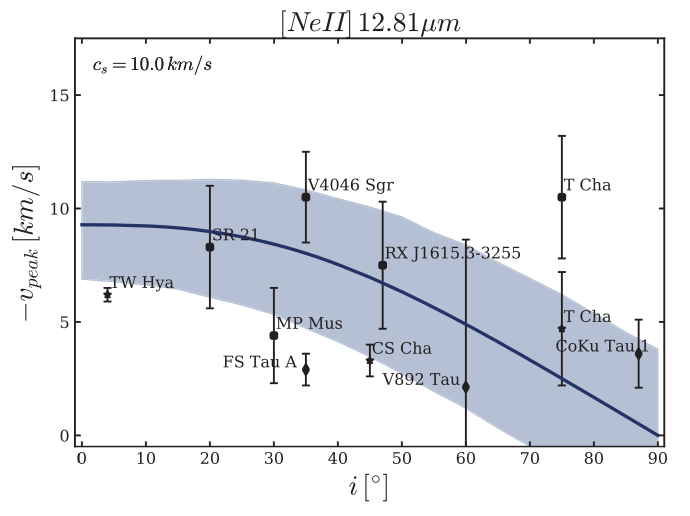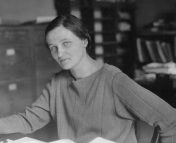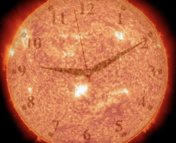
This guest post was written by Lina Kimmig, an astrophysics student at the Institute for Theoretical Astrophysics in Heidelberg, Germany. Lina is crazy about exoplanets and protoplanetary disks. Currently, she is working on twisted disks in her Master’s thesis. At the end of 2021, she will start her PhD to further work in the field of protoplanetary disks. In her free time, Lina loves to ballroom dance and sew her own dance gowns. Also, she is very fond of elephants.
Title: Forbidden line diagnostics of photoevaporative disc winds
Authors: Giulia Ballabio, Richard D. Alexander and Cathie J. Clarke
First Author’s Institution: School of Physics and Astronomy, University of Leicester, UK
Status: Published in Monthly Notices of the Royal Astronomical Society, [closed access]
Protoplanetary disks have many secrets. Studying them will bring us closer to understanding where we come from. Are you ready to discover some of them?
Protoplanetary Disks Are Windy
Planets are born in protoplanetary disks. Those disks form together with their central star from a collapsing gas cloud as a consequence of angular momentum conservation. (It’s like forming a pizza in space.)
But protoplanetary disks don’t live forever. These disks lose mass over time. Accretion is one cause of mass loss, where the star eats up material from the disk. Another cause can be a wind launched from the surface of the disk. Such a wind can be driven by magnetic fields, or by the star in the center of the disk. The star, prolifically sending out radiation, heats up the surface layer of the disk. How this leads to a wind is the first secret: the heat causes a part of the disk to be blown away, similar to water vapor while boiling water. This process is called photoevaporation (Figure 1).

Photoevaporation can theoretically be caused by different kinds of radiation: extreme-ultraviolet (EUV) photons, far-ultraviolet photons (FUV), and X-rays. It is still unknown which kind is dominant in the photoevaporation process. FUV photons typically drive photoevaporation in the outermost regions of the disk, but both EUV and X-rays can cause photoevaporation in the inner disk regions. So how can we distinguish between the EUV and X-ray driven processes? The authors of today’s paper aim to answer this question.
Forbidden Emission Lines Uncover Winds
Disk winds are hard to observe due to their low densities and large distances from their star. But don’t give your hopes up yet! There is a clever way to observe them using forbidden emission lines. Normal emission lines occur due to electron energy level transitions in atoms. As excited electrons return to their ground states, a photon of a wavelength corresponding to the energy difference of the levels is emitted. However, normal emission lines are not suitable to detect disk winds because the disk itself emits the same type of radiation and we wouldn’t be able to tell the difference. Forbidden lines are caused by electron transitions which are not allowed by selection rules (those rules generally state which transitions are possible). But here’s the second secret: most transitions corresponding to forbidden lines are not actually impossible, just really rare. Those rare transitions occur when atoms are excited to meta-stable states, for example through collisions with other atoms. Usually, electrons in meta-stable states return to their ground state when the atom collides with another atom. In this case, no photon is emitted. However, in gases with extremely low density, there are just not enough other atoms around for such collisions. Therefore the electrons need to return to their ground states by emitting a photon in a wavelength that is “forbidden” by the selection rules. Thus, observing forbidden emission lines allows us to observe low-density regions such as winds.
Blue-Shifts Give Insight to Wind Properties
To observe and analyze winds in disks, we have to exploit a characteristic property that all emission lines from such winds possess: they have a blue-shifted component due to the Doppler shift that depends on the inclination angle of the observed disk. Zero inclination means observing the disk from above, 90° means looking at it from the side. The authors find that this property reveals something about the wind.
They establish a new approach to find forbidden emission lines caused by photoevaporative disk winds. They analytically model the wind using the following properties as input parameters: wind shape, amount of mass loss, temperature, and inclination. The authors then use the mathematical description to compute the line emission along the line of sight. This approach is much faster than complex hydrodynamical simulations that can take days to compute. Using this method, the authors find a strong dependency of the emission line blue-shifts on the wind’s sound speed (see Figure 2). The sound speed directly relates to the wind temperature in the assumption of isothermal winds. This important result allows the authors to estimate the temperature of the wind given the measured inclination and observed blue-shift. The temperature can then reveal which kind of radiation is dominant in photoevaporation due to its dependence on photon energies. A higher temperature indicates higher energy radiation.

To compare the results to observations the authors reduce the resolution of the modeled data to fit the instrumental resolution of existing observations. They investigate several emission lines, including [NeII], [OI], and [SII] lines. However, the observational sample size is small for most of these lines, with the [NeII] sample being the strongest. As Figure 3 shows, a sound speed of cs = 10 km/s fits the observational data best. This corresponds to a temperature that is rather high for disk winds, pointing to EUV photons as the dominant driver of wind formation.

Although this result brings us a step closer to understanding disk winds, the third and final secret states: there are still many unknown aspects of protoplanetary disks, and they remain secrets for now.
Astrobite edited by Ellis Avallone
Featured image credit: Figure 9 in Armitage 2011.




